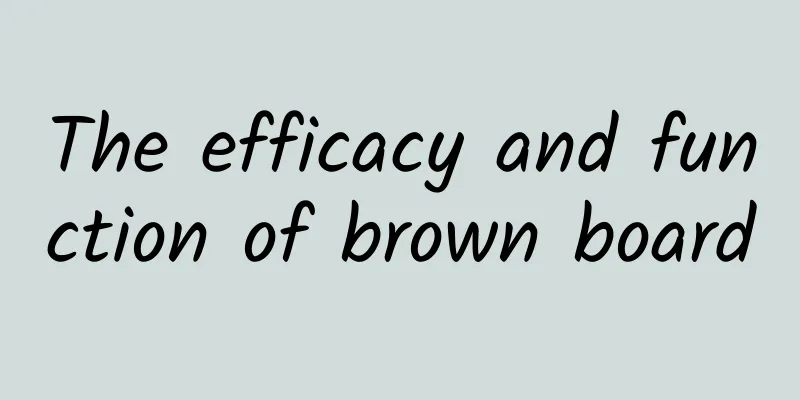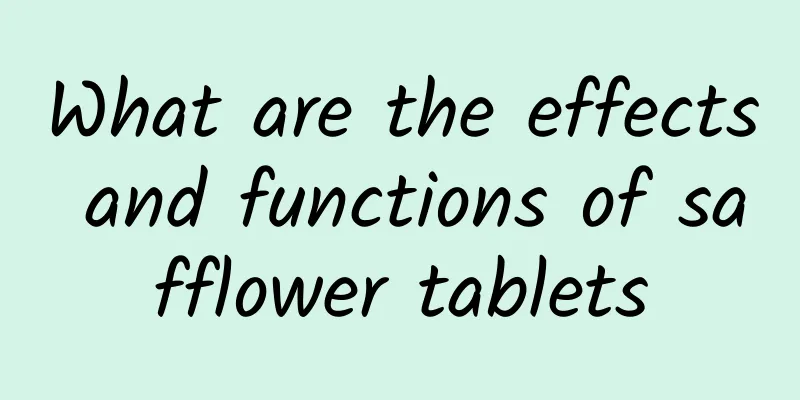The efficacy and function of brown board

|
Brown board is a very common type of traditional Chinese medicine and is also a frequently used medicine. It has unique effects and functions in treating many diseases. Here we will tell you in detail about the effects of some Chinese medicine brown boards. 【English name】 Petiolus Trachycarpi 【Alias】 Palm bark, palm wood bark, palm bark [Source] It is the petiole of Trachycaarpus fortunei H.Wendl., a palm plant of the Arecaceae family. Peeled in September and October, dried in the sun, and stir-fried for charcoal. 【Original form】 Evergreen tree. Stem cylindrical, unbranched. The leaves are clustered at the top of the stem, round and fan-shaped, leathery, about 70 cm long, wrinkled, palm-shaped when unfolded, deeply fissured to above the middle of the leaf, with the lobes having a main vein and two lobes at the tip; the petiole is more than 1 meter long, hard, convex on the bottom or convex on both sides and prismatic, with thorns on the edges; the leaf sheaths embrace the stem, split into brown fibrous hairs, and after the leaf sheaths fall off, ring-shaped nodes can be seen. The spadix is short, emerging from the leaf cluster, with many large sheath-like bracts at the bottom; the flowers are small, numerous, light yellow, unisexual, and dioecious; there are 6 tepals in 2 whorls; there are 6 stamens, with very short filaments; there are 3 ovaries in the female flower, fused at the base. The drupe is spherical or nearly reniform, and the perianth is persistent. Seed 1, flat spherical or reniform, dark gray or light black. The flowering period is from April to May, and the fruiting period is from November to December. [Habitat distribution] Growing in valley jungles, or cultivated. Distributed throughout the south of the Yangtze River. [Properties] The petiole is long and strip-shaped, narrow and thick at one end and wide and thin at the other end, of varying sizes. The surface is reddish brown, rough, and has vertical wrinkles; one side has obvious protruding fibers, and both sides of the fibers are covered with numerous brown hairs. It is hard and tough, not easy to break, and has a fibrous cross-section. Odorless, light taste. 【Chemical composition】 Contains tannin and cellulose. [Nature and flavor] It is neutral in nature, bitter and astringent in taste. 【Functions and indications】Astringent and hemostatic. 【Excerpt】 《*Dictionary》 Although palm board has many magical effects, it cannot be eaten casually. We need to use the medicine according to the user's own situation. I hope everyone will not take it indiscriminately to avoid unnecessary consequences. |
<<: The efficacy and function of palm flowers
>>: The efficacy and function of palm peel
Recommend
[Smart Farmers] Is the “fresh and clean” Aster a “nutrient plunderer” with great destructive power?
When it comes to invasive alien plants, the most ...
The efficacy and function of Populus communis
There are many kinds of common Chinese medicinal ...
[Smart Farmers] High folic acid corn makes you eat "healthier"
[Smart Farmers] High folic acid corn makes you ea...
[National Cancer Prevention and Treatment Week] How to prevent and treat these 5 common infections after colorectal cancer surgery? This article will teach you!
It is reported that despite strict aseptic measur...
Space will be very busy in 2022, and global aerospace will face these difficult tasks →
In 2022, the global space industry is expected to...
Is Shanghai’s beverage “nutrition grading” healthier?
Recently, some beverages in Shanghai have begun t...
The efficacy and function of tree 茭瓜
We can often see tree water melon in daily life, s...
Chinese medicine prescription for high prolactin
For many people, this may be the first time they ...
Tiangong Space Station: Opening a new era of Chinese "space settlement"
On December 9, 2021, Wang Yaping (left) and Ye Gu...
China Tourism Academy: China Study Tour Development Report 2022-2023
On March 20, 2023, the "China Study Tour Dev...
Effects and functions of chrysanthemum and wolfberry tea
Chrysanthemum and wolfberry tea actually has many...
Top physicists will discuss the future of quantum at the birthplace of quantum mechanics
2025 was declared the "International Year of...
Good news for diabetics! This experiment in space has so many benefits...
Expert of this article: Yang Chao, PhD in Chemist...
My ankles ache slightly when it rains. Is this a disease?
Author: Tang Qin, Researcher of Chinese Medical A...









